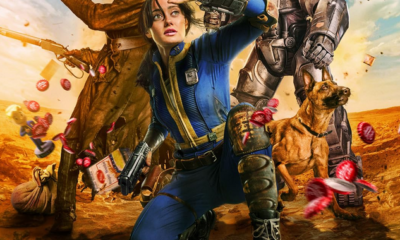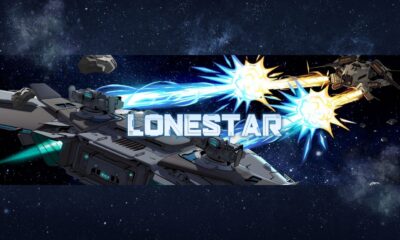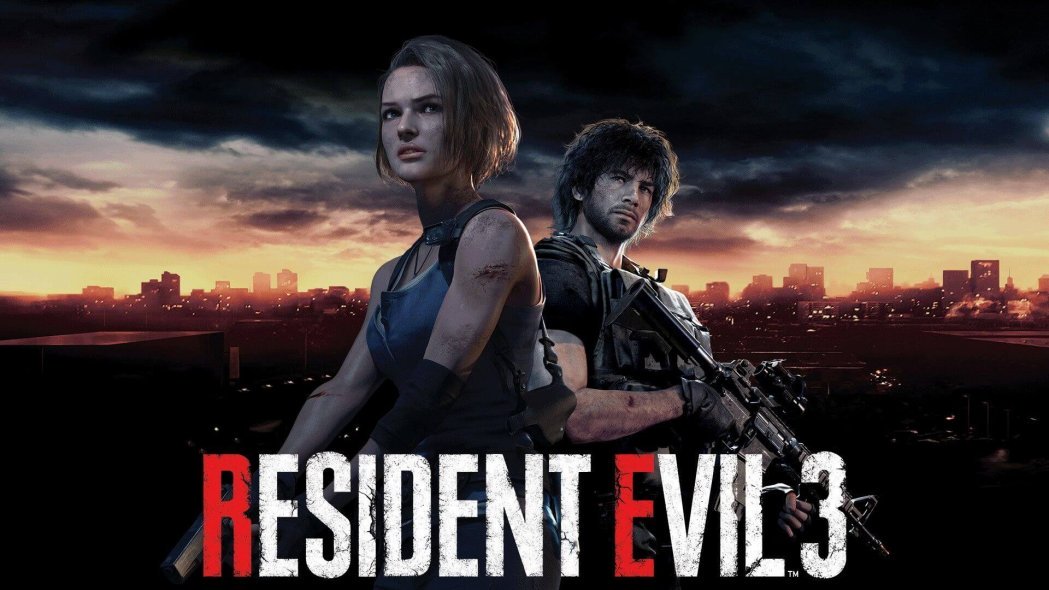
Resident Evil 3 (2020) • Nemesis Doesn’t Get the Stars He Was After
More Videos
Published
4 years agoon
By
Jake Neville
Alright, strap in. Boy, do I have some words. It is well known that I am the biggest fanboy of the series, and that I am deeply familiar with the series origins, its values, evolution, lore, you name it. Not only was I blown away by the heights of the recent Resident Evil 2 remake, but I was floored by the announcement that its sequel, Resident Evil 3, had been in development for even longer than 2 and that it would be releasing a mere year later using the same game engine. While it might have been my fault to hold such high expectation after the success of 2, and the promising trailers of 3, I came out of my run with Jill and Nemesis sorely disappointed.

Jill’s face no longer looks like a sandwich
Personally, I love PS1 graphics. But there is certainly no denying how exciting it is to see such popular characters of the franchise, and in gaming, be reimagined in breathtaking HD. Graphics and assets have all been vastly improved compared to the original on this contemporary gen console, and given such vibrancy by the addition of stellar lighting designs and detailed textures to really cement the denizens (human or otherwise) in reality. Adjacently, the world of Raccoon City oozes personality with the ability to deeply detail its setting. With the inclusion of in-world advertisements for movies, restaurants and drugs, as well as making sure that the world pops with details like hastily boarded up doors, flaming cars, and ransacked shop interiors, Raccoon City truly feels like an interconnected, living, breathing world. It is a great pleasure to roam iconic locales that were once two-dimensional backgrounds in vivd three-dimensions and is probably the strongest asset of the game.
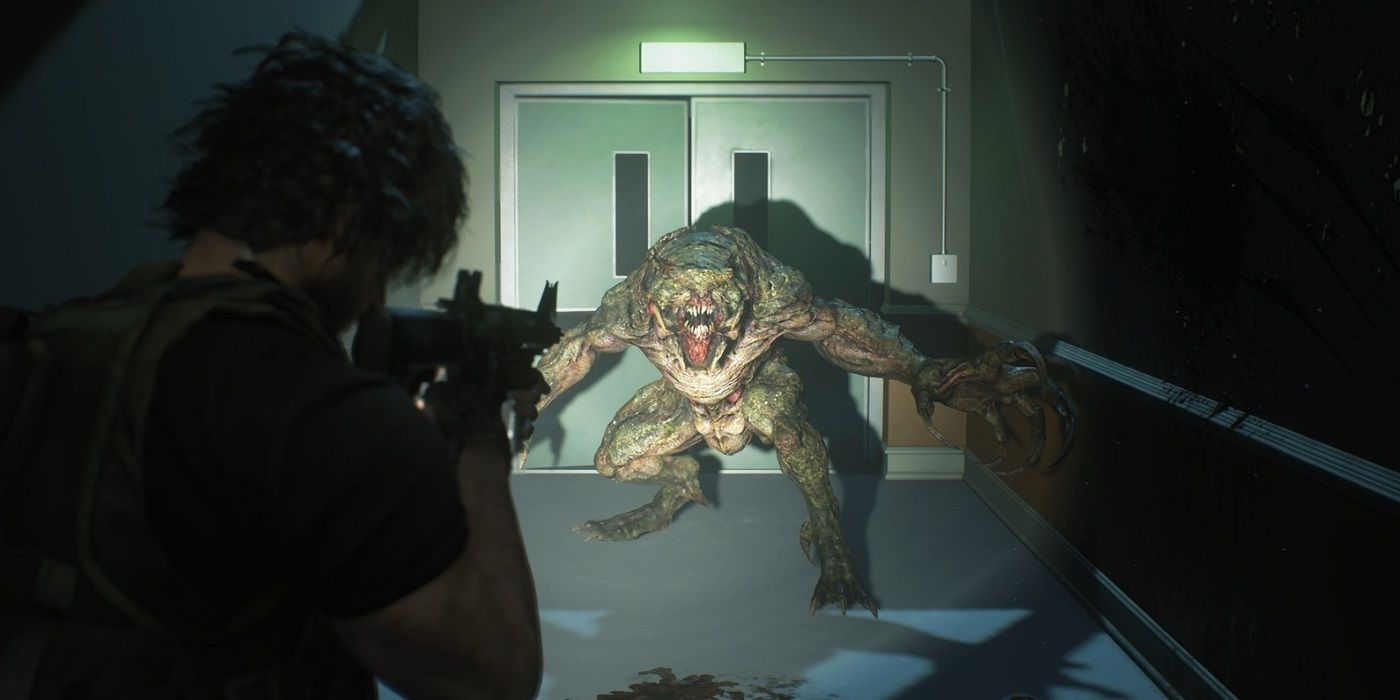
Master of lockpicking
The strongest draw of the original games were their similarity to a giant-escape-room. The entire game was a puzzle, items were to be collected to gather new items to access new areas to pick locks in to gather more items to complete more puzzles to move to new areas until you were done. Yes, that exists in some capacity in this game with its collectable key items that access new areas, but their collection requires no intelligent action as the key objective is consistently updated by the game and obviously pointed out to the player in-game. The campaign itself might as well be completely linear. In fact, the scope of Raccoon City is an illusion this time round. Areas are so often barred by ‘rubble’ that any option to travel off the beaten path is lost. The entire map is dramatically scaled down from the sprawling and interesting original, and characters don’t even travel to each new area – they’re brought there through cutscene and sequestered off from any place they’d been to before. What this makes for is a title more focused on action than it is on adventure, something at odds with the core of the game built on a foundation of exploration and survival horror. Its laurels are combat, which is just as engaging and tense as its predecessor, but I fail to give it merit since its predecssor implemented these functions and this title only introduced a vaguely overpowered dodge mechanic. And it has less diversity in weaponary this time around.
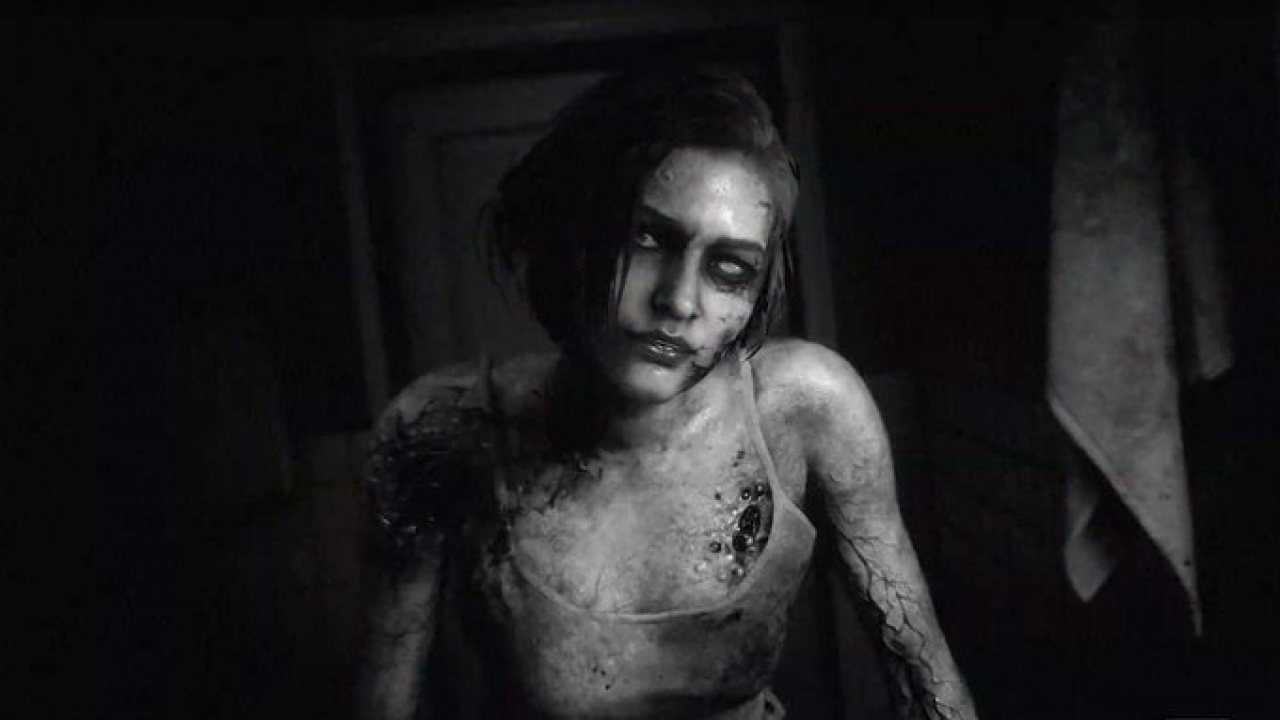
A story REimagined
I struggle to consider this game a remake. There are so many changes to the original game that it barely resembles itself anymore. A remake ought to take the strongest qualities of the original and enhance it further with modern technologies, use the opportunity to rework its shortcomings, and alter the game’s story enough to generate intrigue and add story elements that only serve to thicken the plot. This title does none of those things, except giving Carlos a hunky makeover and more of a personality. Not only is the game focused on running and gunning enemies (so many herbs and ammo boxes this time, and autosaves?), but this game wants you to be done with it as quickly as possible. Even with careful exploration on hardcore difficulty, this game was finished in five hours. The remake cuts so many iconic areas from the original (clock tower, park, factory) which means it cuts story, and gives you nothing but sly references to those missing pieces. In fact, the story is somehow simpler and less dense than the original (which makes no sense considering how limited memory was back then and this is a next gen console) and offers no secondary run through, no alternate ending, or even an additional game mode. It’s better to think of this game as a ‘what if’ scenario, because it is absolutely ludicrous that Jill wouldn’t go back to the Raccoon Police Department on a night like this – the best part of the original game, I might add.
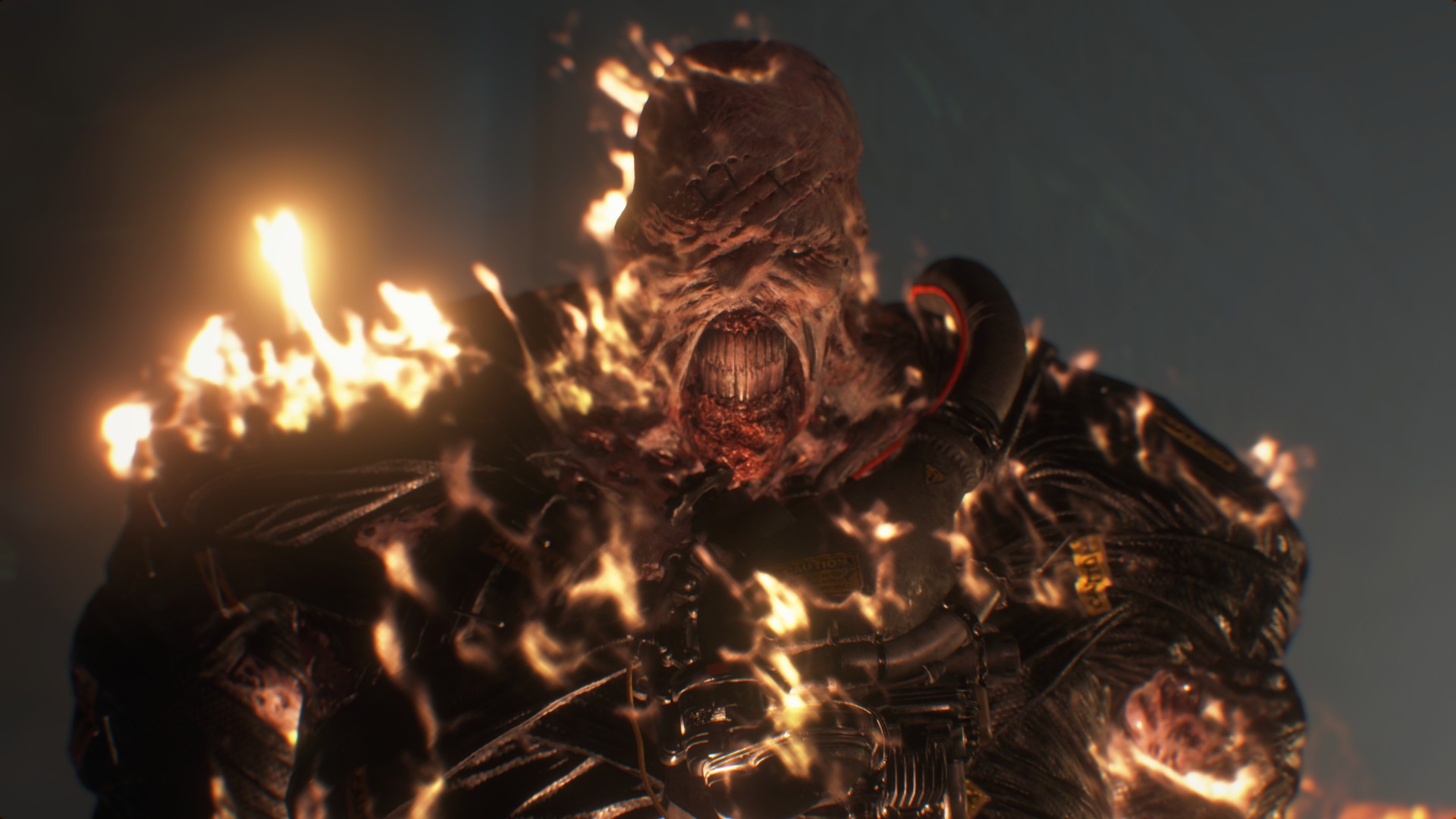
Nemesis, the nemesis to my enjoyment of this game
The posterboy of villainy in the series – Nemesis, a gaming icon. With the superb redesign of Mr X in Resident Evil 2 who brought a newfound sense of terror and anxiety to the game with his brutish stalking presence, the hype for Nemesis (a character known for being worth at least three Mr X’s in terms of power) was palpable. Nemesis was the original stalking boss, and he had the capability to run after the character, follow them through doors, fire missiles at them, and kill you in one go – even back in 1999. Cut to today, and the potential for Nemesis is squandered by relegating his presence in the game to setpieces. Nemesis appears in cinematics and primarily as the only boss figure in the game (R.I.P. Gravedigger). There are small sections in the game where he does his usual chasing of the player, but since the game is so short and the map so linear, these encounters are small and rare. He won’t even go through doors. The buff he was given to surpass the might of Mr X was a tentacle he can now use to drag you back to his feet (that is given no warning for you to be able to dodge) and a dash mechanic where he can basically teleport in front of you. Neither of these design choices feel earnt, and feel like a cheap way to keep you face to face with the beast. Also, his iconic ‘STARS’ line is barely audible.
C Ranking
Look, as a game, it is good. As a Resident Evil game, it is good (even though it feels like a DLC to Resident Evil 2). But as a remake of a Resident Evil game, it is not good. It is unfortunate that this game feels rushed and feels as though its designers completely missed where the worth of the original title lied. It is worth the run through (although not for the price tag, maybe wait a couple of months), and is certainly an enjoyable game packed with challenge, but feels incomplete. There is also an additional game bundled called Resistance, but this is an online multiplayer shooter that holds no influence over the experience of the main game. If you’re looking for the true Nemesis experience, play Resident Evil 2, or better yet play the original game, because you won’t find it here. Two and a half Cthulhus out of five. For my take on the predecessor, read here.
 (2.5 / 5)
(2.5 / 5)
You may like
Continuing with video games I got to try out at PAX East, I was delighted to demo Let’s! Revolution! the debut game by developer and publisher BUCK. BUCK has historically been an animation and design studio, notably having worked on Into the Spiderverse and Love, Death, & Robots. Let’s! Revolution! marks their first foray into the world of video game development. I found this so interesting, I spoke to the Creative Director for Let’s! Revolution! on his career and how BUCK navigated that transition (find it here).
Let’s! Revolution! is a roguelike puzzle game inspired by the classic game Minesweeper. In it, you play as one of six heroes fighting their way along the dangerous roads to the capital city. Once there, you can defeat the tyrannical king and save the kingdom from his reign. Released in July of 2023, the game has been met with high praise. Unsurprisingly, this includes the game’s artistic and musical direction (by the team at Antfood), which is both stylistic and beautiful.
Watch the console reveal trailer here for a taste of the delightful animation and music:
I had the opportunity to play a 20 minute demo of Let’s! Revolution! on the PAX East show floor. I played alongside the Creative Director and other people who worked on the game. It’s important to note that this wasn’t long enough to get a feel for all the characters or the replayability of the game. But, it was definitely long enough to be enchanted by the game and the passion of the people who made it.
The core mechanics are inspired by Minesweeper. The player must use the power of deduction to uncover procedurally generated maze pathways to the exit. However, enemies are hidden along the way and can defeat the player before they reach their goal. Each character has their own special abilities that can help. Items and general abilities can also be bought or discovered to make your hero more powerful. All of these are limited in some way either by energy (your action currency) or limited uses per run.

From what I played, the gameplay is relatively simple with a mix of chance and strategy. I liked the cozy atmosphere, especially when combined with the ‘high stakes’ mechanics associated with Minesweeper. The UI was easy to understand and interact with while still being cohesive with the storytelling. And of course, the character design is exquisite and narratively driven, with many of the characters presenting as queer.
Having released on consoles earlier this month (April 2024), Let’s! Revolution! is even easier to access than ever. Let’s! Revolution! is a perfect game for those who love cozy roguelites and beautiful (queer) aesthetics. I definitely recommend it for fans of roguelites looking to try something fresh. Look for it anywhere you game!
 (4.5 / 5)
(4.5 / 5)
Check out my other PAX posts here!
Gaming
Interview with Creative Director Michael Highland: Let’s! Revolution! @ PAX
Published
7 hours agoon
April 19, 2024
Another game I had the chance to play at PAX East was, Let’s! Revolution!, a Minesweeper-inspired roguelite puzzle game by animation (and now game) studio, BUCK. I talk more about the game itself in another post. Here, I wanted to highlight the conversation I had with Michael Highland, the Creative Director for Let’s! Revolution! and his journey through video game development.
How did you become involved in video game development?
I studied digital media design in college; this was before there were many programs dedicated to game development. After graduating, I self-published a mobile game called Hipster City Cycle with friends. Over the next few years, I slowly got more freelance work as a game designer, and eventually landed a full-time role at thatgamecompany working on the follow-up to their 2012 GOTY Journey. I worked my way up there and was eventually the Lead Designer on Sky: Children of the Light. Working at thatgamecompany opened a lot of doors professionally. I eventually wound up at BUCK, where I saw the opportunity to help establish a new game studio within a very vibrant existing creative culture.
What has been the most challenging aspect of the development process?
Each studio has its own unique issues based on the people involved. There are commonalities like the need to fight feature creep and building consensus around ideas early in the process when all you have is an abstract grey box prototype to react to. At BUCK the biggest challenge has been channeling the abundance of creative energy and talent into a shippable product. There’s a ton of enthusiasm for games within the company, and without clear product-centric goals (who is the target audience, what platform are we releasing on, what’s the marketing strategy), projects have the tendency to spiral out of scope. Another challenge has been building credibility with publishers. BUCK has an amazing pedigree for animation and design, maybe the best in the world, but when we initially pitched ideas to publishers, they all said the same thing: looks great, but until you’ve shipped a game, you’re too high-risk. That’s what led to us self-publishing Let’s! Revolution! Now that we have a well-reviewed game out in the wild, I feel confident we’ll have more luck with publishers.
BUCK primarily has its roots in animation, what led the decision to start branching into video game development?
It started with a general excitement about the medium and a desire among the staff to work on a game. Leadership at BUCK is all about providing the staff with exciting creative opportunities, and getting to work on a game, is, for some, a creative dream come true. And putting BUCK content out in the world is a point of pride and a boost to morale. From a business perspective, the fact we can staff out game projects with the top animation and design talent in the world is a huge advantage. We’re already starting to see new opportunities for the service side of the business based on the success of Let’s! Revolution!
The art, unsurprisingly, is delightful. What were some of the priorities during the character design process and how did those influence the final hero designs?
Our Art Director Emily Suvanvej really led the charge on the look of the game. There are obvious influences like Studio Ghibli, Moebius, and Steven Universe. My shared goal with Emily was to make something together that reflected the diversity of the team’s artistic and lived experiences. The artists put so much love into the character designs and animation, it really shows.
Some of the primary game mechanics take inspiration from Minesweeper, what was the process like to create your own interpretation of those classic mechanics?
This article goes into depth on this topic. The TLDR is that we took a very iterative approach, at each stage trying to identify what was working about the prototype and lean into that. The initial game concept came together relatively quickly in part because our goal for this project was just to finish a game. We just focused on what was good and kept building on it. I wouldn’t say the final game is “perfect” – but we wound up with a much bigger and higher quality experience than I expected by not letting perfectionism get in the way of making good better.
Is there anything else you would like to plug or that you think is important for people to know about Let’s! Revolution! or other upcoming projects?
The music and sound design for the game is stellar. We worked with a creative audio company called Antfood and they knocked it out of the park. The audio got an honorable mention from IGF, which I think is extra impressive because most of the other games were audio-centric titles with some unusual hook to the sound design. For the OST, Antfood reworked all of the music from the game into a continuous flow, like a concept album. It’s so good. I love working with them.
Next in my journey of all the cool games I saw at PAX, Quest Master! Quest Master is a love letter to retro dungeon crawlers and level designers. Taking inspiration from both Mario Maker and the Legend of Zelda franchise, Quest Master promises the ability to play and design dungeons with a variety of enemies, traps, and puzzles.
Check out the Quest Master game announcement here:
I was given a private 30-minute demo, where I got to try out some of the core features in a pre-beta version of Quest Master. This demo was led by one of the developers, Julian Creutz who shared some insight into the game design and user experience. My interview with Julian about Quest Master can be found here.
Quest Master has two main modes, playing dungeons and building them. I got to try out both, though I had a more comprehensive experience playing dungeons. While playing dungeons, the game mechanics were intuitive and simple. However, I was continuously surprised by the complexities offered by the puzzle and logic systems. For example, you can collect a boomerang which is incredibly easy to use. To solve one of the puzzles, I had to throw the boomerang through a torch (which I thought was just decorative) to catch the boomerang on fire and enable it to activate a gem. While the individual mechanics were basic, they combined into a sophisticated puzzle-solving experience.
Immediately, I was eager to look under the hood and see how the dungeon building mode enables the puzzle solving as previously described. Once again, I was impressed with the sophistication of a system with such simple mechanics. The controls for building weren’t intuitive for me, though I also don’t use a controller for much of my gaming (like I was during the demo). Additionally, I could see how it would be really easy to get accustomed to as you build.
As it was a short demo, I wasn’t able to try any of the multiplayer features (i.e. co-op, online map sharing) so I can’t speak to the success of their implementation. As this is supposed to be a large part of the game, I’m wary of wholeheartedly suggesting Quest Master for those interested in the multiplayer experience. However, I was impressed with Quest Master’s modern take on retro dungeon crawlers like the Legend of Zelda games. The graphics and controls feel like much needed quality of life updates for a system taking inspiration from older classics.
I recommend wishlisting Quest Master if you are a fan of old Legend of Zelda games or are looking for a fresh take on the dungeon builder genre. If Quest Master interests you, don’t forget to check out my conversation with Julian too!
 (4.5 / 5)
(4.5 / 5)
Check out my other PAX posts here!




